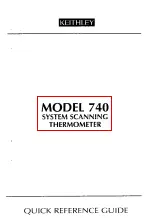
ECO GOLD
102
Appendix with settings
25/08/2011/
YACE0088
F.2.2 Procedure for setting the control parameters for external control
1.
Activating external control (
Ì
2.
Set the slave controller:
2.1. Parameter to
auto
;
Xpf in dependence of:
−
Check or adjust device type (
Ì
−
Select heat transfer liquid with as low-viscosity and with as high a thermal capacity as possible.
Ranking list: Water, water/glycol, oils, Fluorinert®.
−
Set pump level as high as possible,
−
Make sure there is adequate circulation,
−
select the hose length as short as possible, e.g. 2 x 1 m,
−
select the hose cross-sectional area as large as possible, e.g. ½ inch,
−
set the throughput through the external consumer as large as possible.
2.2. Set Xpf:
−
With a tendency to oscillate with a short period of oscillation (e.g. 30 s)
Î
Xpf smaller, otherwise
larger,
−
with poor thermal coupling and a large mass to temper
Î
large (e.g. 2...5, possibly even larger),
−
with good thermal coupling and a small mass to temper
Î
small (e.g. 0.2...0.7),
−
if fast temperature changes are required, external baths should be controlled if possible with in-
ternal control. Otherwise choose Xpf to be very small (0.05 ... 0.1).
3.
Setting the master controller (PID controller):
−
First start with Auto, then possibly continue with manual.
3.1. Setting Kpe:
−
With a tendency to oscillate (long period of oscillation, e.g. 10 min)
Î
Kpe larger, otherwise
smaller,
3.2. Setting Tne/ Tve/ Tde:
−
Generally quite high values (Tne = 70 s ... 200 s; Tve = 50 s ... 150 s),
−
with smaller values
Î
faster transient responses, otherwise slower transient responses and
therefore less oscillation,
−
Tve: To reduce transients
Î
increase Tve, otherwise vice versa,
−
Tde (damping for Tve): generally approx. 10 % of Tve.
4.
Correcting quantity limit (
Ì
F.2.1) and temperature limits (Til/Tih) (
Ì
−
Set according to the physical boundary conditions.
Example:
Heat transfer liquid
Correcting quantity limit
Til
Tih
Water
depends on heat transfer liquid and vessel
5 °C
95 °C
















































